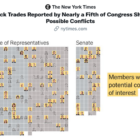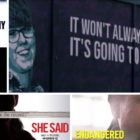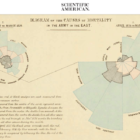Top 10 in Data Journalism
Data Journalism Top 10: Lawmaker Insider Trading, Queen Elizabeth’s Money, Celebratory Gunfire, Russian Bomb Shelters
|
From stories examing potential conflicts of interest among lawmakers in Peru and the US, to a data story revealing the history of Queen Elizabeth II’s portrait on banknotes worldwide, our column features the best in data journalism. Also this week: the dangers of so-called celebratory gunfire, displacement in the Democratic Repubilc of Congo, and how the war in Ukraine has impacted children living in institutional care.









